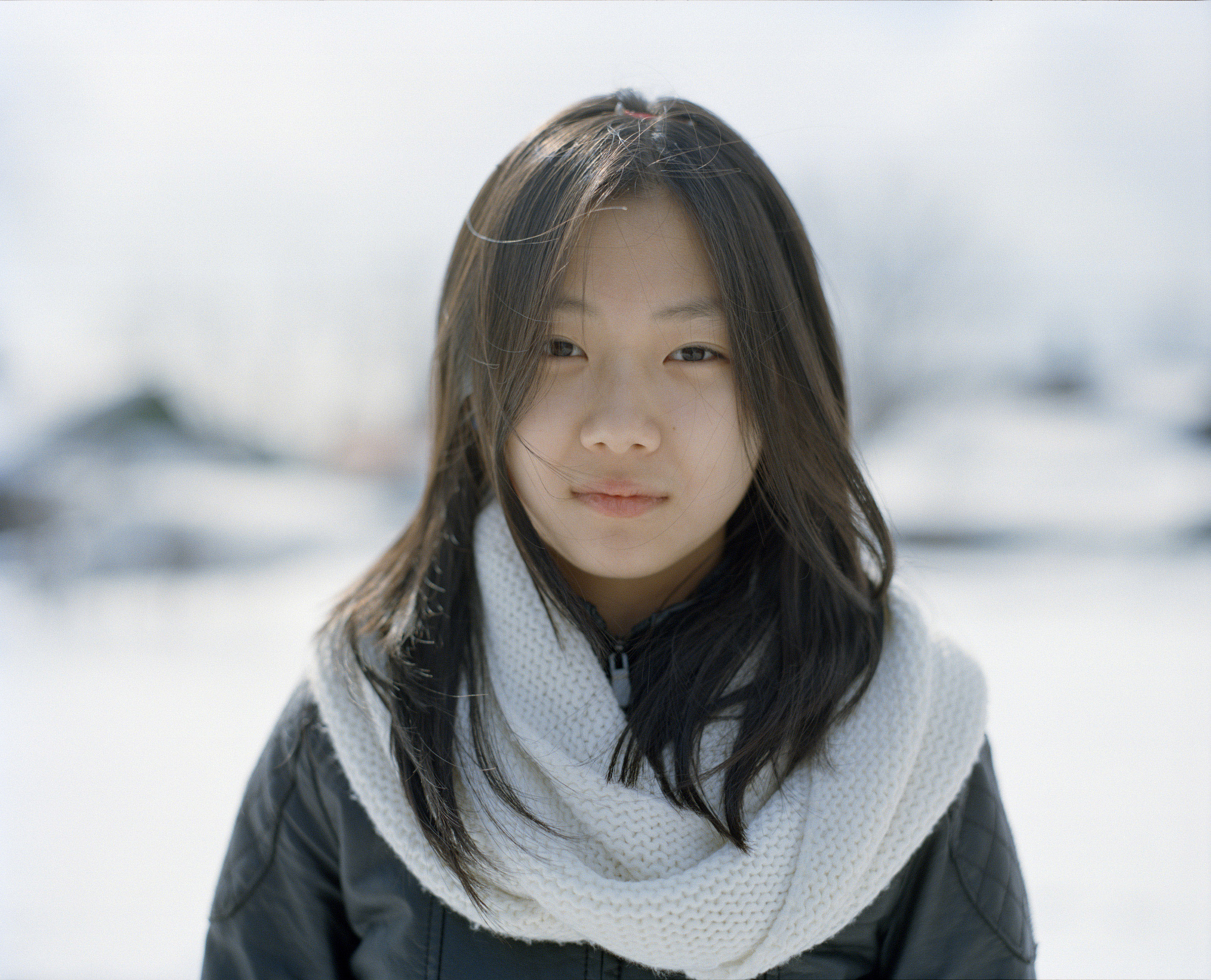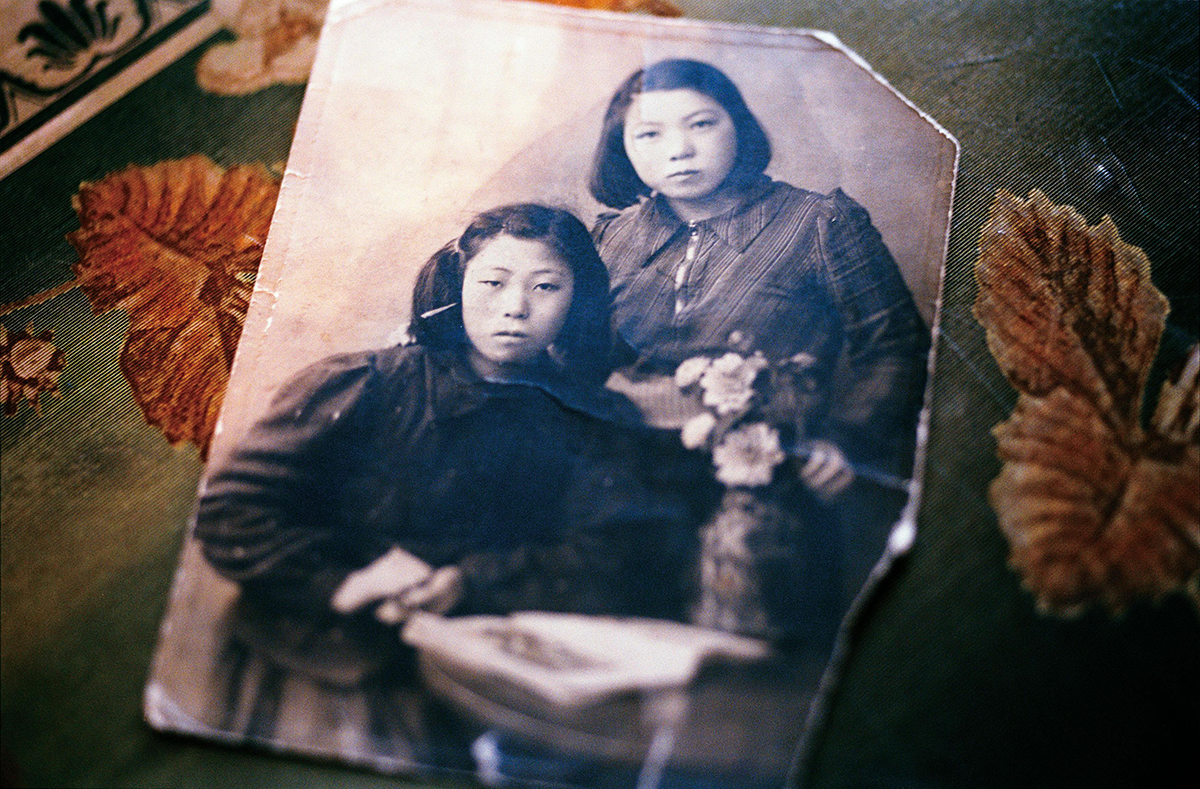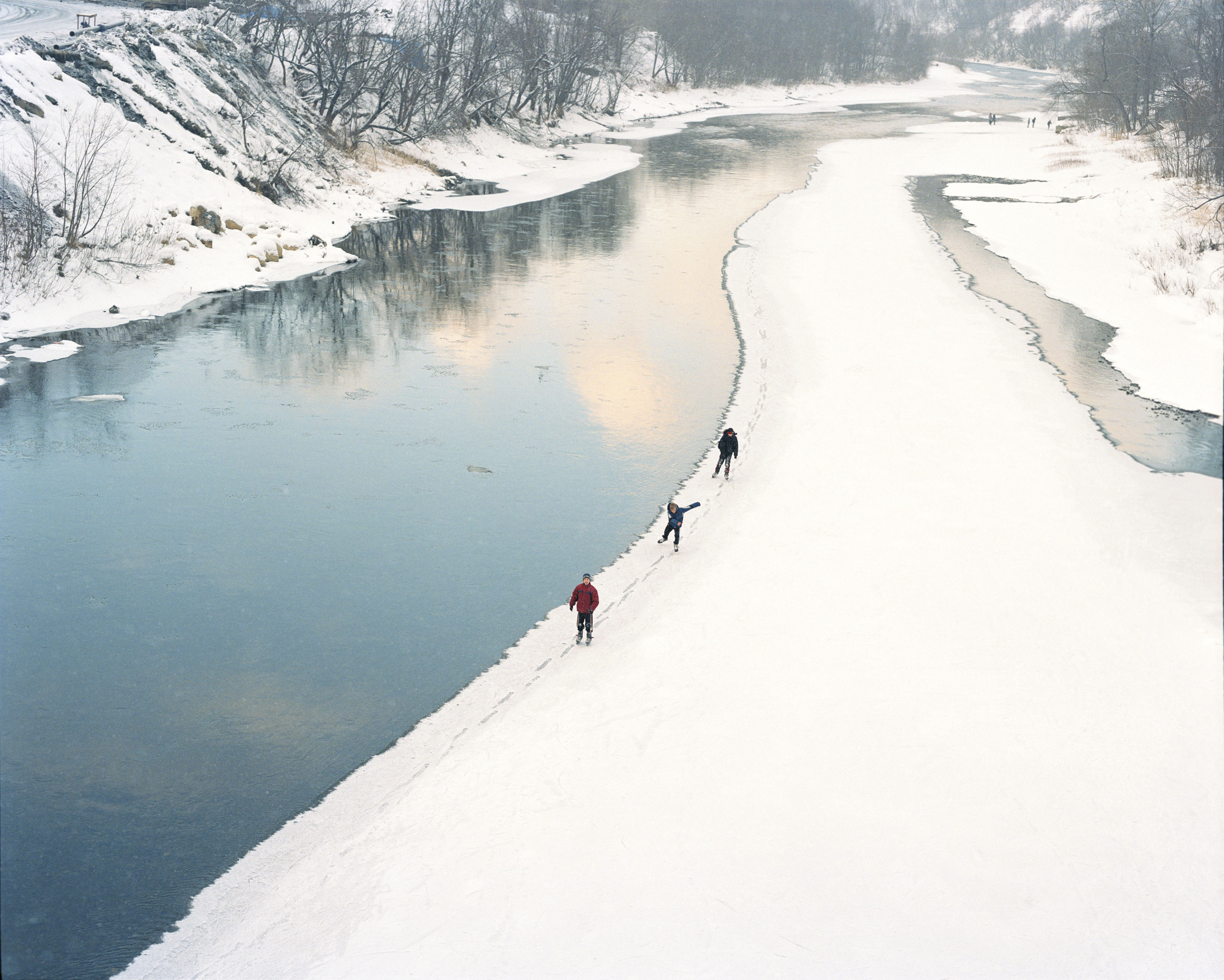
「ウラジクの長女レーナさん
(公珠さんのひ孫),
ユジノサハリンスク(旧豊原)」2014年

「金公珠さん(写真左)国民学校高等科の頃、同級生の目黒千絵さんと,
ユジノサハリンスク(旧豊原)」2010年

「ブイコフ(旧内淵)」2011年
展覧会概要
新田樹は1996年にはじめてサハリンを訪れて以降、2010年より継続的にこの地に通ってきました。1905年のポーツマス条約締結後、日本の北辺の地となっていた樺太は、1945年のソ連による対日参戦によって異国の地となり、多くの日本人が本土へと帰っていきました。その一方、敗戦に伴い日本国籍を失った人々は、サハリンに留まらざるを得ませんでした。新田がレンズを向けてきたのは、戦後この地に取り残された朝鮮半島出身者(カレイスキー)やその配偶者たちです。
サハリンで日本語を話す女性たちに出会った新田は、「日本の方ですか?」と、話しかけました。その時の「いいえ、私たちは戦争の前にここへ来た朝鮮人です」という返答は、自身の中に深く沈滞し、長くサハリンに通い詰めるきっかけとなりました。その道程は国家と国家の深い谷間に落ち込んでしまった人々や風景に目を凝らし、そこに響く消え入りそうな声に耳を傾けることでもありました。
新田の写真には、日本と朝鮮、そしてソ連(現ロシア)のあわいで宙づりになりながら、寄る辺なく生きることを余儀なくされた女性たちが写されています。そして、歴史の激流に翻弄されつつも、彼女たちがこの地に足をつけて積み上げてきた時間の層や日本領だった頃の痕跡を簡単には消し去らないサハリン特有の風土が静謐な画面の中に捉えられています。昨年、第31回林忠彦賞と第47回木村伊兵衛賞を受賞し、近年高い評価を受ける新田の作品をぜひご覧ください。
(企画構成 小原真史)
新田 樹(にった たつる,1967− )
1967年福島県出身。東京工芸大学工学部卒業後、麻布スタジオを経て半沢克夫氏に師事、1996年独立。2023年3月、ロシア・サハリンに暮らすサハリン残留朝鮮・韓国・日本人の姿を収めた写真集『Sakhalin』(ミーシャズプレス)と写真展「続サハリン」(ニコンサロン、東京)で2023年、第31回林忠彦賞、第47回木村伊兵衛賞を受賞。個展に「続サハリン」(THE GALLERYニコンサロン)、「Sakhalin」(三鷹市美術ギャラリー)、グループ展に「スティル・エコー:境界の風景」(東京都美術館)など。
基本情報
| 会期 | 2024年9月9日(月) 〜 2024年10月30日(水) |
|---|---|
| 開館時間 | 10:00〜19:00 |
| 休館日 | 木曜日、日曜日、10月5日(土) *ただし、10月13日(日)は開館 |
| 入場料 | 無料 |
| 会場 | 東京工芸大学 写大ギャラリー 〒164-8678 東京都中野区本町2-4-7 5号館(芸術情報館)2F TEL 03-3372-1321 (代) 地下鉄丸ノ内線/大江戸線 中野坂上駅下車 1番出口・徒歩7分 |
| 展示作品 | カラー写真作品 約50点 |
| トークイベント | 「樺太とサハリンのあわいで」 2024年9月27日(金)18:30〜 登壇:新田樹×小原真史(東京工芸大学准教授) |
| 主催 | 東京工芸大学 芸術学部 |
| 企画担当 | 小原真史 写大ギャラリー運営委員 |
トークイベント
2024年9月27日(金)18:30〜「樺太とサハリンのあわいで」
登壇:新田樹×小原真史(東京工芸大学准教授)
参加費無料、要予約(03-5371-2694/shadai-gallery@t-kougei.ac.jp)
Karafuto/Sakhalin: Nitta Tatsuru Photography Exhibition
Exhibition Outline
After first visiting Sakhalin in 1996, Nitta Tatsuru began to visit the island regularly after 2010. Under the 1905 Treaty of Portsmouth, the southern part of the island was controlled by Japan and known as Karafuto. After the Soviet Union entered the war against Japan in 1945, Sakhalin became foreign territory, and many of the Japanese residents returned to Japan. Other colonial residents, however, lost their Japanese citizenship when Japan was defeated, and these people were stranded on the island. Nitta turned his camera toward ethnic Koreans (known in Russian as Koreyskiy) and their spouses, who were left behind after the war.
When Nitta met women on Sakhalin who spoke Japanese, he asked them, “Are you Japanese?” They answered, “No, we are Koreans who came here before the war,” a response that left a deep and lasting impression on Nitta, leading him to begin his frequent visits to the island. That journey was one of gazing at people and landscapes that have fallen into the deep ravines between nations, and of listening to the fading voices that echo there.
Nitta’s photographs depict women who have had nowhere to turn, forced to live suspended in the space between Japan, Korea, and the Soviet Union (now Russia). Captured in their tranquil frames are the layers of time these women have accumulated, as they placed their feet on the ground while at the mercy of the strong currents of history, as well as the unique environment of Sakhalin, where the traces of the era when it was Japanese territory are not easily dispelled. Please take this opportunity to view Nitta’s work, which has gained critical acclaim in recent years, including both the Hayashi Tadahiko Award and the Kimura Ihei Award last year.
Planned and organized by Kohara Masashi
Nitta Tatsuru(1967−)
Born in Fukushima Prefecture in 1967. After graduating from Tokyo Polytechnic University with a bachelor’s degree in engineering, Nitta joined Azabu Studio and later worked as an assistant to Hanzawa Katsuo. He went independent in 1996. For his photobook Sakhalin (Misha’s Press, 2022), a collection of images of stranded Koreans and Japanese living in Russian Sakhalin, and the accompanying exhibition Sequel to Sakhalin (Nikon Salon, Tokyo), he was given both the 31st Hayashi Tadahiko Award and the 47th Kimura Ihei Award. Solo exhibitions include Sequel to Sakhalin (Nikon Salon, Tokyo), Tokyo, and Mitaka City Gallery of Art); he also participated in the group exhibition Still Echo: Border Landscapes at the Tokyo Metropolitan Art Museum.
